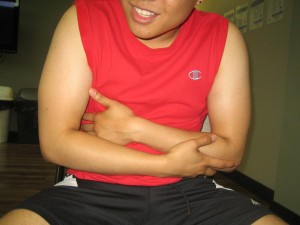It is important to note that the urinary tract is comprised of the kidneys, bladder, ureters and the urethra. All of these structures work accordingly in order to eliminate waste out of the body via the urine. Always bear in mind that the urinary tract is responsible for storing urine, concentrating the urine and eliminating it out of the body. When it comes to UTI, it can affect all of these components.
What are the causes?
Urinary tract infections are basically triggered by infective organisms that go in the body via the urethra which is the passageway that carries urine from the bladder up to the eliminated. Once the organisms were able to enter the body, they can travel from the urethra to other structures in the urinary tract. In most cases, the body prevents the bacteria from entering. There are certain conditions such as urinary retention, diabetes, kidney stones or an enlarged prostate which makes it easier for the bacteria to invade the body.

Types
UTI is classified based on the area of the urinary tract that is infected. Always bear in mind that a urinary tract infection that involves the bladder is called as cystitis. If the urethra is affected, it is called as urethritis. The most prevalent type of urinary tract infection involves the urethra and bladder. The ureters are rarely affected. Once a urinary tract infection involves a single kidney or both, it is known as pyelonephritis which is considered as severe type of infection.
Symptoms
One of the common symptoms of UTI that occurs in the urethra or bladder is pain and cramping in the lower region of the abdomen as well as the back. Women often feel uncomfortable abdominal pressure aside from the abdominal pain. Other symptoms that can manifest include pain and burning sensation during urination and frequent urge to urinate. Even though those with UTI feel the frequent urge to urinate, they will only pass out a small amount of urine. The urine can also be cloudy, dark in color and foul-smelling. If the kidneys are the site of infection, additional symptoms include nausea, chills, fever and vomiting.
Treatment
Since most cases of UTI are caused by bacteria, they can be managed with antibiotics. The symptoms typically clear up within a couple of days, but it is vital to continue taking the medication in order to prevent the infection from recurring. If the pelvic and abdominal pain is severe, pain medications can be prescribed to relieve the symptoms until the infection subsides. In case of severe infections, intravenous antibiotics are required. You can learn more how to manage the symptoms by registering for first aid training today.
Prevention
There are various ways in order to reduce the development of UTI. It is important to drink large amounts of water to flush out the urinary system as well as prevent the bacteria from multiplying. For women, wipe from front to back after a bowel movement to reduce the risk of spreading bacteria from the anus to the vagina. Urinating before and after sexual intercourse can help remove bacteria from the area as well as prevent pushing it into the urethra.
